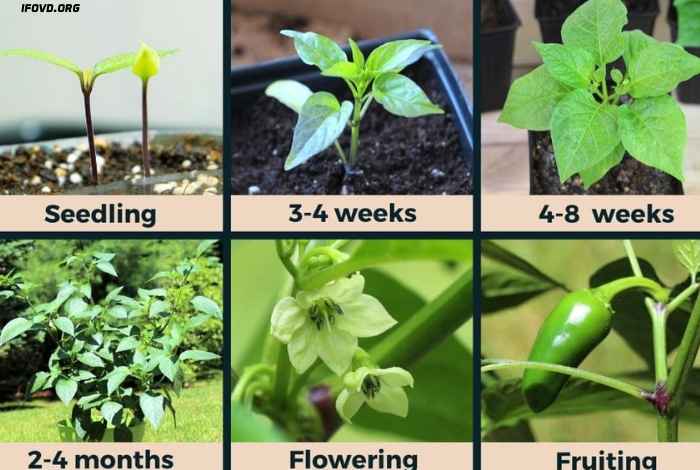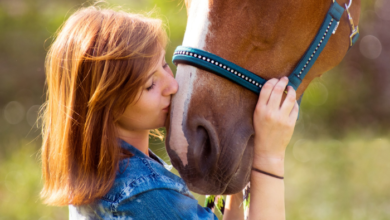Jalapeno Plant Stages

The jalapeno pepper, a beloved ingredient in countless dishes around the world, is not only renowned for its fiery flavor but also for the remarkable journey it undertakes from a tiny seed to a flourishing plant laden with vibrant green peppers. The growth stages of a jalapeno plant encompass a series of intriguing transformations, each phase playing a crucial role in shaping the final harvest. In this article, we will delve into the captivating world of the jalapeno plant’s growth stages, unveiling the processes that occur at each step of its development.
Germination: The Seed’s Awakening
The journey of a jalapeno plant commences with germination, as the seed awakens from its dormant state. Moisture and warmth are essential factors that trigger this stage. Planted in well-draining soil, the seed absorbs water and swells, cracking its outer shell.
A tiny root, known as the radicle, emerges first, seeking stability and nutrients within the soil. Simultaneously, a delicate shoot emerges from the soil surface, searching for sunlight to initiate photosynthesis. As the cotyledons unfurl, they provide the nascent plant with the initial burst of energy required for further growth.
Seedling Stage: Nurturing Early Growth
In the seedling stage, the young jalapeno plant’s growth accelerates. The shoot, now equipped with its first set of true leaves, harnesses the power of sunlight to synthesize energy. At this stage, careful attention is required to ensure adequate water and light.
Excessive moisture can lead to damping-off disease, which can be detrimental to the plant. Transplanting seedlings into larger containers also allows the roots to develop a strong foundation, preparing them for the subsequent stages of growth.
Vegetative Growth: Laying the Foundation
As the jalapeno plant enters the vegetative growth phase, it focuses its energy on building a robust foundation of leaves, stems, and roots. The number of leaves increases significantly, and the plant’s height expands rapidly.
Pruning can play a role in shaping the plant’s structure during this stage, promoting air circulation and preventing overcrowding of foliage. Fertilization is crucial to provide essential nutrients like nitrogen, phosphorus, and potassium, which facilitate healthy foliage development.
Flowering: Nature’s Call to Reproduction
The transition from vegetative growth to flowering marks a critical juncture in the jalapeno plant’s lifecycle. In response to changes in light duration and intensity, the plant initiates the formation of flower buds. Jalapeno pepper plants are self-pollinating, meaning they possess both male and female reproductive structures.
However, natural pollination can occur through wind, insects, or even gentle agitation of the plant. It is essential to maintain a consistent environment to facilitate successful pollination and prevent stress that could lead to blossom drop.
Fruit Development: The Birth of Jalapeno Peppers
With successful pollination, the jalapeno plant channels its energy into developing peppers. The initially small and green pods swell and gradually change color as they mature. Throughout this stage, providing adequate water and nutrients is crucial to ensure healthy fruit development. Nitrogen-rich fertilizers should be replaced with options containing more potassium and phosphorus, which support flowering and fruiting.
Ripening: Unveiling the Fiery Flavor
As the peppers continue to mature, they undergo a mesmerizing transformation in color – transitioning from deep green to shades of red or even orange, depending on the jalapeno variety.
This color change signifies the accumulation of capsaicin, the compound responsible for the fiery heat of the pepper. The longer the peppers remain on the plant, the hotter they become. Harvesting can commence once the desired color and heat level are achieved.
Harvesting: Reaping the Rewards
Harvesting jalapeno peppers is a satisfying culmination of the plant’s growth stages. Using pruning shears or gentle hand-picking, peppers should be carefully removed from the plant to avoid damaging stems or future growth.
Leaving a small portion of the stem attached to the pepper can extend its shelf life. Once harvested, the jalapenos can be used immediately or preserved through methods like drying, freezing, pickling, or canning.
Dormancy and Renewal: Preparing for the Next Cycle
As the growing season wanes, the jalapeno plant’s productivity gradually decreases. The days shorten, temperatures drop, and the plant begins to shed leaves. This signals the onset of dormancy, a period of rest during which the plant conserves energy to survive harsh conditions.
Proper care during this stage involves pruning back the plant, reducing watering, and protecting it from frost. Many gardeners choose to bring potted jalapeno plants indoors during winter, ensuring their survival for the next growing season.
Conclusion
The journey of a jalapeno plant from a humble seed to a bountiful bearer of fiery peppers is a testament to the wonders of nature. Each growth stage plays a pivotal role in shaping the plant’s ultimate destiny.
From the delicate emergence of the first shoot to the vibrant transformation of the peppers, every phase requires dedicated care, attention, and a touch of gardening finesse. By understanding and nurturing the jalapeno plant’s growth stages, gardeners and enthusiasts alike can unlock the full potential of this remarkable plant, adding a touch of spice to their culinary endeavors.



